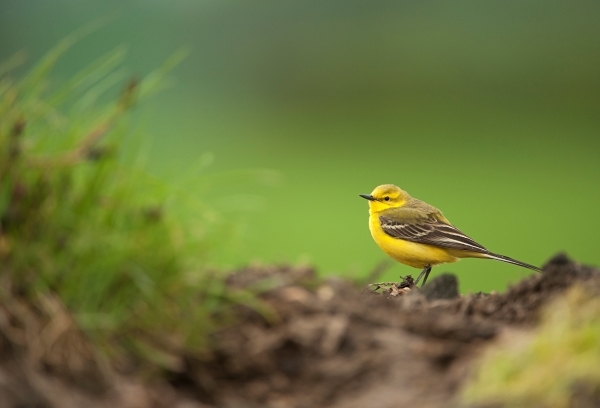Restoring habitat for migratory birds in Ghana: A collaborative effort

Yellow Wagtail © Ben Andrew, RSPB
21.02.2024
The Royal Society for the Protection of Birds (RSPB) has announced an ambitious new initiative, backed by the Ecological Restoration Fund, aimed at safeguarding and restoring critical habitats for migratory birds. The programme seeks to address pressing conservation challenges in four key landscapes situated along the East Atlantic Flyway – a vital bird migration route spanning from the Arctic, down through Europe to the southern tip of Africa. RSPB’s Flyway Conservation Outreach Officer Nick Williams and a team have recently returned from one of these pivotal migratory bird hotspots: the savannahs of northern Ghana. Here the RSPB is collaborating with national conservation organisation and BirdLife partner Ghana Wildlife Society (GWS) to restore connectivity between protected areas.
The wooded savannahs of northern Ghana witness the annual arrival of migratory birds journeying south from Europe, seeking respite from the approach of Autumn in the north. In particular, respite can be found in the acacia tree, as noted by GWS’ Joseph Afrifa; “As migrant birds return here from Europe they arrive when most other trees are bare. So the acacias, which still have leaves, provide them with shade and they also begin to fruit at this time which attracts insects, so the returning birds have access to food”. During the team’s November visit to Mole National Park, they identified 38 bird species in just an hour and a half of birdwatching, including some that breed in the UK, including Pied Flycatcher, Willow Warbler, and Yellow Wagtail.
However, outside of these protected areas, much of the suitable habitat for these birds, and the region’s wildlife more generally, has become broken into disconnected fragments. To the southwest of Mole lies another national park – Bui. Previously animals could travel easily between these two areas along a corridor, vital for the movement of a diverse range of species from elephants to small songbirds. These corridors have since been disrupted by human activities, including burning on agricultural land and encroaching settlements.
To combat this fragmentation, the RSPB and GWS are collaborating with the Ghana Forestry Commission to restore critical wildlife corridors, which will need a long-term programme of habitat restoration, scientific research and, crucially, collaboration with local communities. Nick Williams noted that; “GWS’s work in this region has been rooted in community engagement. They have been instrumental in helping to establish CREMAs (Community Resource Management Areas) for villages close to the boundaries of Mole National Park. A CREMA devolves power for managing natural resources away from the state and into the hands of local communities – making it easier to establish wildlife-friendly practices at a local level.”
Williams added that; “The hope is that by collaborating with communities to establish a network of these CREMAs, as well as undertaking habitat restoration and wildlife surveys (to monitor population improvements while mitigating human-wildlife conflicts), an effective wildlife corridor can once again be established between Mole and Bui.”
Such collaborative endeavours not only enhance biodiversity but also empower communities to become stewards of their natural heritage. It is hoped this project will also serve as an exemplar for landscape-scale conservation in the region to be adopted across sub-Saharan Africa.